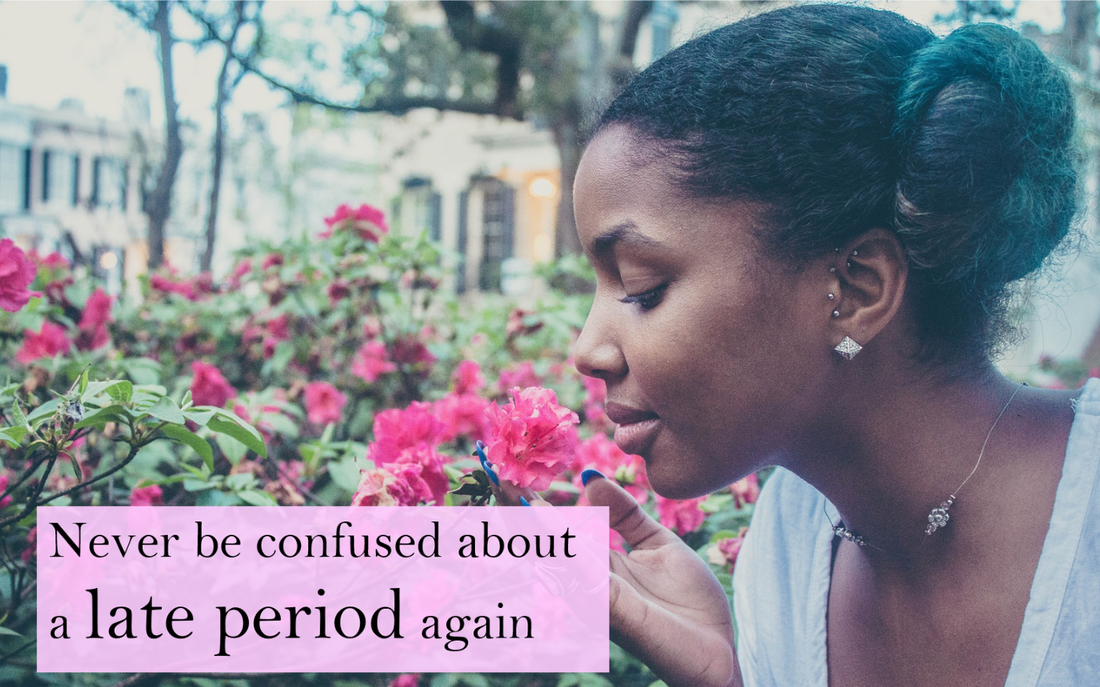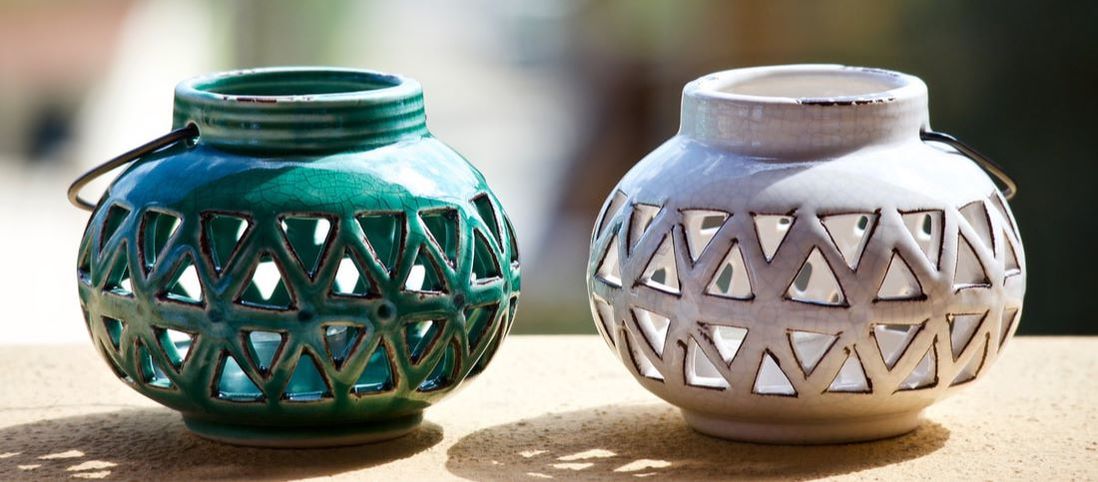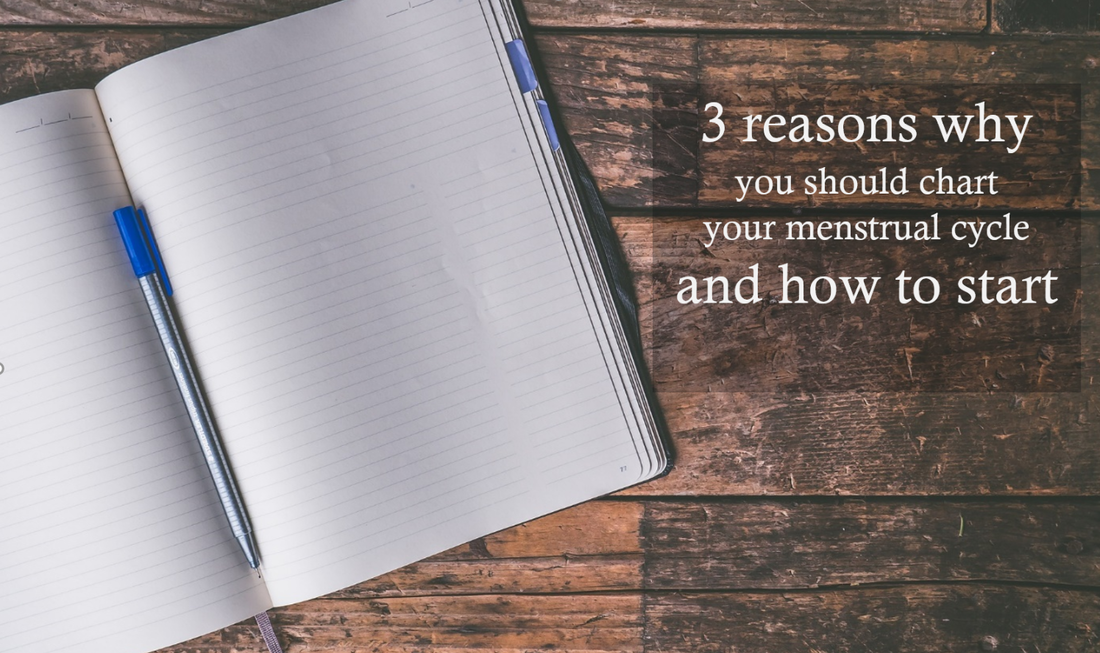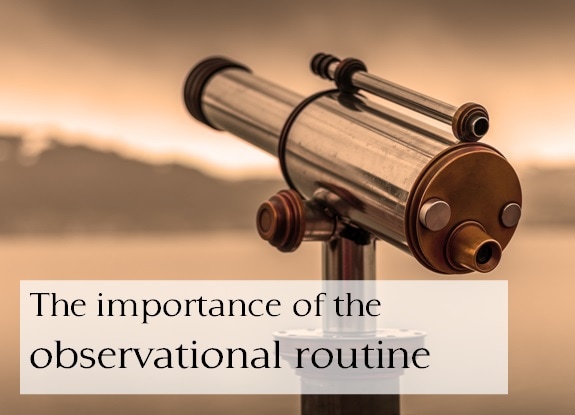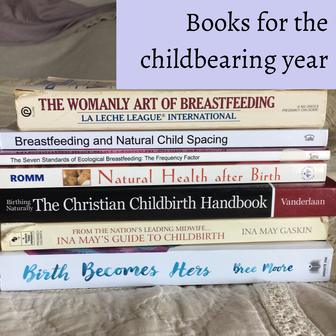 These are some of my favorite books for the ‘childbearing year’. It is so important to fill your heart and mind with positive, helpful, inspiring and encouraging information about this sacred season of life. We are beautifully created by the Author of Life, designed with the strength, courage, intuition, flexibility and creativity needed to bring forth children. There is no fruit in listening to anyone tell you otherwise :) (Disclaimer - I don’t necessarily agree with the worldview of all of the authors nor 100% of the content of these books) -Birth Becomes Hers by Bree More. This is a book about free-birthing, or the practice of having babies independently without the attendance of midwives. While I personally prefer to have my home births in the presence of my dearly trusted and well-trained midwives, this book is still an excellent resource about physiological birth, spirituality in birth, and is full of triumphant and joyful home birth stories that will make you actually look forward to labor! Although I believe the main part of the book as well as some of the birth stories are written from a Mormon perspective, I appreciate this book as it points our eyes toward our Creator for strength and peace, rather than inward as so many birth books do. -Ina May’s Guide to Childbirth by Ina May Gaskin. This is THE classic text on natural childbirth. I read this each time I’m pregnant. Half of the book is an illuminating introduction to natural childbirth and the GOOD design of a woman's birthing body ("You are not a lemon" is a favorite quote), the other half is a series of wild and inspiring birth stories that open one's eyes to what a woman's body is capable of. This book certainly contains a few questionable spiritual elements but is nevertheless a valuable resource. -The Christian Childbirth Handbook by Jennifer Vanderlaan. A Christ centered, Scripture-rich introduction to natural childbirth. This is the only truly Christian childbirth book I've read, and I found it enjoyable and encouraging. -Natural Health After Birth by Aviva Romm This book is a rich, holistic, practical guide to postpartum care, filled with tips and natural remedies. The postpartum time is such a vital healing, bonding, and building time for both mother and baby and too often neglected in our childbirth preparation. This is a book I have on hand for reference, and I typically pull it out anytime I or a friend has a baby! -The Womanly Art of Breastfeeding by the La Leche League. Another classic text for new parents, this is a must read for anyone hoping to breast-feed (or even if you aren’t sure yet!). My copy is quite dated and I know there are new editions out there that contain new information pertinent to modern life. -The 7 Standards of Ecological Breastfeeding and Breastfeeding and Natural Child spacing by Sheila Kippley. These precious books have taught me more about attachment parenting and mothering infants than any others. I have found them to be deeply challenging to societal expectations of what life with a baby looks like and how important maternal attachment is to lifelong emotional and physical health. Of course, these books are also full of useful information about the relationship between breast-feeding and suspension of fertility, which are typically only briefly mentioned in other natural family planning resources. What are your favorite resources for pre-conception, pregnancy and postpartum? What should I read next?
0 Comments
Have you ever considered having a homebirth? For some, the idea seems daunting, and maybe even a little wild! But to others, giving birth in the comfort of one's own home under the care of skilled, licensed midwives sounds like the ideal childbirth experience. If you are one of these women, you're definitely not alone! I've had several homebirths myself, and they have been some of the most incredible and memorable moments of my life.
One of the many benefits of homebirth is the opportunity for your other children to be more involved than perhaps they could be in a hospital setting. While some women prefer to labor alone, with their children tended to by a loving sitter, you may find yourself wanting to have your children nearby and participating in this miraculous event. But how does one prepare children for birth? The sights, sounds and events in the birthing room may be unfamiliar and even frightening; not only for children but husbands and other family members who might be in attendance! I'd love to share with you some ways that I've worked to prepare my children for the births of their siblings, and how this preparation has helped them to enjoy these special family moments and treasure them forever.
Tell them their birth stories
My kids love hearing stories about when they were born. We share with them the excitement, the challenges and the joys in each of their deliveries. Pictures of them as fresh newborns are great to share too! They are always full of questions about the details, and it's so sweet to remind them of the love and anticipation with which we awaited each of their arrivals. Read books together We've been blessed to find a number of sweet children's books geared toward preparing families for the birth of a child, both in a hospital setting or at home. Here are a few of our favorites: (Note - make sure you preview these and decide if they are right for your family before reading them aloud. A few contain birth related nudity, mentions of spirituality, non-anatomically correct language, etc.) Include them in prenatal care If your care provider is open to this, try to include your kiddos in prenatal care as much as possible. My kids come to all my midwife appointments and are even invited to help with tasks such as listening to baby's heart beat, measuring the belly, and taking blood pressure. This really helps them to feel connected and involved with baby even before the birth date arrives.
Watch birth videos
I have found many beautiful professionally filmed birth videos on Youtube that present homebirth in a real, raw, yet beautiful and slightly curated way. This helps to normalize the sounds, emotions, and events in a birth for kids while highlighting the joy. Again, this is something you'll definitely want to preview before sharing with your kids to decide what level of detail they can handle, as well as check it for language and such. But I've found that my kids love birth videos and even request their favorites on a regular basis! Give them a job Depending on the ages of your children, they may be able to take ownership of small tasks in the birthing space. Some ideas are keeping mom's water bottle filled, providing cool cloths for mom's forehead, checking the birth pool temperature, helping with younger siblings, getting snacks, or just holding mom's hand and providing encouragement. Talk about the tough stuff Another important element of preparation is to talk with your kids about some of the tough things they may see or hear. We tell our kids that labor is hard work and that it hurts mommy, but it's okay! We tell them that mommy isn't scared and that this is a big job for her to do to bring baby out. We also talk about the loud noises and wild faces mommy might make, as well as the reality of postpartum bleeding. Emphasizing that these are all good parts of God's plan for babies to come out, and that mommy is ready and not afraid, helps them not be worried by what they see and hear. Assemble your birth team Other than qualified midwives, it may be a good idea to include some other helpers on your birth team, especially when kids around. We make sure we have a sitter/grandma/auntie to take care of the kids so mom and dad can focus on the labor without needing to change diapers, get snacks, etc. Ideally this is someone who the kids feel very comfortable with! We also always hire a doula to provide encouragement, education and physical support during our births. Our doula is also a childbirth educator and put together a neat 'doula assistant' presentation complete with coloring pages and handouts to teach the kids more about how to be great helpers during the birth. Pray and read scripture together Praying over the baby and the birth daily is another beautiful way to lead your children in trusting in God's love and provision for the pregnancy and birth process. It will do you a world of good, too! Taking time each day to read scriptures that detail God's lovingkindness and care is a wonderful balm to the soul, and helps the whole family to remember that the gift of life is from Him and He holds us all in His hands.
Prepare your birth space
One of the most special parts of a home birth is being able to create a calm, sacred birthing space in which to welcome your child. Writing Bible verses to hang on the wall, hanging Christmas lights, adding cozy textiles and colors - the possibilities are endless! My kids like to color pictures for me to look at while I'm laboring. It's such a sweet encouragement! Make postpartum special for everyone Of course, once the baby arrives the joys of welcoming a new member to your family have just begun! Finding a balance between protecting mom and baby's bonding, rest and recovery while still including the siblings in welcoming the new baby can be tricky. It's helpful to talk with your husband ahead of time to come up with strategies and ideas for both including the big kids, and distracting them with other things when necessary. The kids may be disappointed at how much baby needs to sleep and nurse and how little they can contribute to care. Asking big kids to fetch diapers, choose baby outfits, sing lullabies, etc can make them feel useful and important. This can also be a great time for dad or grandma to take the big kids on special outings. Gift baskets are another wonderful touch - a new toy or coloring book can make siblings feel special and remembered in the midst of all the fuss over baby. Make memories This probably goes without saying, but savor every moment! Take lots of pictures, write your birth story, save mementos, and make this birth a special family memory to be shared together for a lifetime. What about you? Have you ever considered a home birth, or had one yourself? What were some ways you prepared your family? If you’ve ever had a late period, you’ve probably wondered, “Could I be pregnant?" Whether you are trying to achieve a pregnancy, or currently using natural family planning to avoid conceiving, you may find yourself running out to buy a pregnancy test, only to get a negative result. Okay so you're not pregnant, now what? What happened and why is your period late? You can’t always avoid a late period, but you can avoid feeling confused or concerned about it. How you may ask? First, a little Cycle 101. The menstrual cycle consists of several phases. The follicular phase, which is pre-ovulation (the release of an egg from an ovary), the fertile window (the time around ovulation when conditions are right for conception), and the luteal phase (the post-ovulatory part of your cycle.) While the length of the follicular phase can vary, the luteal phase is generally stable. A healthy luteal phase is between 12-16 days long - you can count on it being nearly the same length every cycle. Once you ovulate, the luteal phase begins, as well as the countdown to your period. With this in mind, there are really only two reasons why your period might be 'late'. 1. You’re pregnant. Depending on where you and your partner fall on the ‘trying to conceive/trying to avoid’ continuum, you may have mixed feelings about this. But if you had intercourse or genital contact during the fertile window, and you confirm ovulation, then there is a chance you've conceived. After spending roughly a week traveling from the fallopian tube to the uterus and then embedding in your uterine lining, your baby will start producing HCG hormone. Once your body registers this hormone, your normal cyclical activity is put on hold, and your next period doesn't come. So if your luteal phase is longer than normal, that's a true 'late period' and you can take a pregnancy test. 2. Ovulation didn’t happen, or was delayed. However, if you didn’t ovulate, you may be watching the calendar expecting your period to arrive, but your body hasn’t even started the two week countdown yet. No ovulation, no luteal phase, no period. So your period appears ‘late’, but it’s actually ovulation that is late. It's a myth that all women ovulate on day 14 of their cycles all of the time - a little variation is perfectly normal. Beyond that, ovulation can be significantly delayed or even prevented for any number of reasons: stress, illness, sudden weight loss or weight gain, hormone imbalance, etc.  So how can you know if and when you ovulate? How do you know if your long cycle is due to pregnancy or delayed ovulation? A simple way to track ovulation is to practice fertility charting, or natural family planning. This is more involved than simply keeping track of your period dates - fertility charting involves observing and recording your physical signs of fertility, which provide information about your hormones throughout your cycle. These signs can show you when your body is preparing to ovulate, and confirm when ovulation has passed. By keeping a fertility chart, you can know for certain if ovulation has happened and when you should begin the lookout for your period. By charting, you'll know if your period is truly 'late' (and that you're having a long luteal phase indicating possible pregnancy), or if the delay is simply the result of the timing of ovulation. You'll also be able decide whether or not to avoid intercourse during your potentially fertile window, thus avoiding pregnancy naturally and worry free! Learning to chart your fertility signs is a fascinating process that not only gives you valuable insight into the workings of your body, but also a sense of empowerment and confidence that you understand your own reproductive health and can make informed choices about when to engage in sexual activity.
Are you interested in learning more? Send me a message, browse this website, visit the Facebook page, or take a natural family planning course from me! In cultures around the world, menarche (men-AR-kee), or the first menstruation, is a special time in a girl’s life. Signaling her entrance into adulthood, a girl’s first period is often seen as a rite of passage and worthy of celebration. In most western cultures, though we gladly engage in bridal showers, baby showers, birthday parties, baptism celebrations, and more, menarche usually goes quietly unnoticed. For some girls, rather than being a moment of pride and excitement, her first period is accompanied by embarrassment or trepidation. As a mother myself, I’ve been giving more and more thought to how I want to convey this important life transition to my children. I don’t have a specific plan yet (plenty of time for that!), but I do know that I don’t want to let this moment pass for my daughters without acknowledgement. There are several reasons for this. I believe period positivity can be the beginning of body literacy, giving a girl both a healthy perspective on her body’s development and a sense of the preciousness of her femininity and sexuality. If our girls learn from day one that periods are a beautiful and functional part of how God designed them, they will be encouraged to be proactive in their healthcare, vocal about their questions and concerns, and better equipped to demand that their bodies be respected by others. So celebrating the onset of menstruation, which will be a major part of a woman’s life for decades, is a worthy goal. But how to go about doing it? Menarche rituals will look different for every family and every individual, so don’t constrain yourself to one set idea. Be creative. Ask friends, peruse forums, and explore a variety of options. Here are just a few ideas that I’ve come across:
As you consider what to use for your daughter (or niece, sister, granddaughter, goddaughter, etc), here are some general guidelines that may be helpful to keep in mind: (Oringinally written for SymptoPro.org) So you’ve taken a big step in awareness of your cycle and hormonal health to make the decision to begin charting. Congratulations! Whether you’ve taken a SymptoPro class, learned a different natural family planning or Fertility Awareness Based Method (FABM), or have simply been scouring the web, accurate charting is a must. That is, making sure what’s written on your chart actually reflects your daily fertility signs. So how do you ensure that your charts are accurate? I’m glad you asked. Here are 5 Tips for Accurate Charting to help you get the most out of your experience with fertility awareness. 1. Take your temperature at the same time, in the same way, every morning. If you’ve chosen to observe your basal body temperature, or morning resting temperature, consistency is key. Erratic temperature taking practices can make it difficult (if not impossible) to detect the tell-tale temperature shift that serves as confirmation that ovulation has occurred. To avoid confusion, make sure to take your temperature at the same time every day, preferably before 7:30am and after at least one hour of uninterrupted sleep. It’s also important that this is a true resting temperature. This means taking your temperature while still in bed, before rising, drinking water, brushing teeth, etc. The more accurate your temperature taking routine, the more accurate your chart will be.
1. Don’t skip cervical mucus observations It’s vital not to miss any mucus observations. Sometimes fertile quality mucus may only appear once or twice a day. In this case, missing observations could create inaccuracies in your chart, potentially causing you to mislabel your fertile window. For observing mucus on toilet tissue, make sure to check before and after every single time you use the bathroom. For observing mucus by vaginal sensation, make sure you are paying attention and noticing sensation throughout the day. At the end of the day, record on your chart the most fertile sign that you observed. Don’t save it until tomorrow thinking you’ll remember later! Just like with temperature, make mucus observations in the same way every day. For example, if you learned a method that teaches tissue observations, do these diligently. If your method calls for internal observations, stick with those. Don’t mix and match observational styles – this creates inconsistencies in your chart that are confusing to interpret. Note: The same principals apply to the optional cervical observation. If you choose to observe your cervix (checking for openness, softness, height, mucus, etc), make sure you do it daily. This is a subjective and comparative sign; if you’re missing days, you may be left feeling really confused about what you’re feeling and causing yourself unnecessary stress. (Originally written for LiveWell Collective) With all the cute planners, digital calendars, and fancy phone apps available, keeping track of your period is easier than ever. Whether you write little dots on your wall calendar or record it in your phone, many of us want to remember when our last period started. But there is so much more knowledge to be gained than simply keeping track of when you bleed. I’m referring to the practice known as ‘cycle charting’. Have you ever heard of it? Cycle charting is simply observing and recording your body’s signs of fertility, which include cervical fluid, basal body temperature, vaginal sensation, and cervical position. By doing this, you can create a visual chart mapping the various hormonal phases and events in your cycle, such as the pre-ovulatory estrogen build up, the tell-tale high progesterone phase that dominates the second half of your cycle, and of course, menstruation itself. Learning to chart is a fascinating process that often sets a woman on a journey of self-discovery. Besides being simply interesting, cycle charting actually has practical applications as well. Here are my three favorites. 1. Cycle charting promotes body literacy.
Cycle charting will probably teach you more about your body than you ever knew before. For example, did you know that you can only get pregnant about 6 days each cycle? Did you know that your cycle can be divided into distinct phases? Or that your cervix changes shape and position throughout your cycle? Or that you don’t need to pee on a stick to know when you ovulate? Not only does charting give you a deeper understanding of how your body works physically, but it can also help you to discover how your cycle effects your relationships and emotional experiences on a day to day basis. 2. Cycle charting can be used to plan your family. As I mentioned before, pregnancy is only possible during a short handful of days each cycle. Your fertile window is determined by hormonal and physiological conditions being just right for conception to occur, along with the timely presence of sperm and an egg. Your body has observable signs of fertility that allow you to accurately determine when the fertile window begins and ends. This knowledge can be used to practice natural family planning, or NFP. Not to be confused with the outdated Rhythm Method, which relies on counting days and knowledge of past cycles guess at the timing of the fertile window, NFP relies on real-time physical observations so you can identify the fertile window as soon as it starts, whether your periods come regularly or not. You can simply avoid intercourse during the fertile time, resulting in a 99.4% effective way to avoid pregnancy. This can mean freedom from the risks and side effects of the Pill and other forms of birth control. This is a game changer! As you can imagine, this same skill set can be used to maximize your chances at conceiving. Not only does cycle charting allow you to accurately identify the best days for conception, but it also helps you asses if you have optimal fertility. A simple description of natural family planning (NFP) is using knowledge of a woman's cyclical fertility to avoid or achieve pregnancy. The fertile window is determined by observing physical signs of fertility. Not terribly complicated, right? But what exactly are these fertility signs, and why can we trust them? Can a woman really tell if she's fertile simply by observing her body? Fertility signs are physical biomarkers that reveal where a woman is in her menstrual cycle. Because the fertile window only occurs once per cycle, knowing when that window occurs is vital if a couple wishes to avoid pregnancy naturally (by abstaining during the fertile time), or if they are trying to conceive. Most fertility signs can be observed by the woman herself with no medical tests or specialized equipment. The signs commonly used in most methods of natural family planning are:
Why fertility signs are trustworthyThe reason that fertility signs can be relied upon to detect a woman's brief fertile window is this: fertility signs are direct reflections of hormonal activity. Since women's sex hormones fluctuate in a very particular manner throughout the stages of her cycle, her fertility signs will show exactly what her body is doing. For example, a woman's basal body temperature will rise slightly in response to the hormone progesterone. Fertile quality cervical mucus is produced by the cervix according to a woman's estrogen levels. To a woman trained in fertility awareness, the presence of these signs is unmistakable and their timing tells the story of what her hormones are doing. Even though the moment of ovulation (the once-per-cycle release of an egg from an ovary) can't be detected without ultrasound, the hormonal events surrounding ovulation can be clearly observed through fertility signs. Because of this, a woman who uses NFP can confidently determine when her fertility begins and ends in any given cycle. The implications of this are widespread. As previously mentioned, the ability to determine when she is and isn't fertile gives a woman incredible control and flexibility in her family planning. Pregnancy can be avoided with no pills, devices, or barriers. A couple can also optimally time lovemaking for achieving pregnancy.
But beyond family planning. learning to understand her fertility signs can help a woman to understand and monitor her health. Knowing her usual pattern of healthy cervical fluid will allow the woman to be the first to know if she has some kind of cervical or vaginal abnormality. Fertility charts, records of daily fertility signs, can reveal hormonal imbalances or other health issues. Learning fertility awareness can truly enable women to be active participants in their own healthcare. Fertility signs are reliable, physical reflections of the day by day hormonal story of your cycle. Would you like to know more about how natural family planning works and why it's effective? Read some frequently asked questions or contact me! As a natural family planning instructor and fertility educator, I'm not shy about praising the virtues of women's natural cycles. What I don't often discuss is those times in our lives where our normal, cyclical fertility may be suspended for a time. This could perhaps be from the use of artificial hormonal medication, from illness or over exercise, or for happier reasons such as pregnancy and breastfeeding. As much as a monthly cycle is the biological norm for women, these times without our periods can be a normal part of the feminine experience as well. If you have experienced times of non-cycling, you may be familiar with the mixed emotions that accompany the return of your periods and fertility. Even a mature woman can feel like a teenage girl as she tries to get accustomed to having periods again. While this time can be unsettling, disorienting and distracting, it can also be exciting, rejuvenating, and grounding! Let's talk about some practical ways to gently reacquaint yourself with your period. As your period returns, this can be an excellent time to evaluate your lifestyle and self-care routine. Are you happy with your old menstrual care products, or would you like to try something new? Are you consuming energy-giving, nourishing foods? Have you found a regular form of exercise that is fun and inspiring? Our period can act as our monthly health report. If it quickly becomes painful, too heavy or light, irregular, or difficult to manage, it might be a good time to assess what you can change about your lifestyle to support healthy periods and overall well-being.  This is also the perfect time to learn more about your cycle and practice fertility awareness. Remember, your cycle is everything that happens from the start of one period to the start of the next. The cycle is an intricate interplay of biological processes that affects us both physically and emotionally. Do you know about the different phases of the cycle and how they affect you? Do you know when your fertile window begins and ends? Do you know what your fertility signs are and how to chart them? There has never been a better time to learn than right now! Finally, let this be a time of leaning in and engaging with others. Our feminine biology is something that connects us to other women. Remember puberty? Though it has its awkward moments, puberty is often a time when girls chat about their bodies and their feelings, share stories, and support each other in the reality of becoming women. I would love to see adults do this too! Whether we are living with regular cycles, no cycles, pregnancy, infertility, perimenopause, we can use our uniquely feminine experiences to draw us into deeper community and authentic relationships. And if you have questions about the female cycle, or you want to know how to begin evaluating if you are living a cycle-supporting lifestyle, you came to the right place. I would love to hear from you! Email me at [email protected], or contact me through this form, or connect with me on Facebook or Instagram!
Originally written for the Guiding Star Project.
Last night at quarter after nine in the evening, there was still light outside my window. As usual, summer has fully arrived almost without me realizing it! I don’t know about you, but this summer is a particularly busy season for my family. We’re juggling selling one house, buying another, moving, keeping up with growing little ones, new job responsibilities, traveling, weddings, graduation parties, and lots of time with family. Does this sound like your summer too? While this is all wonderful and exciting, it can also be rather draining. My husband and I are feeling a bit frazzled and distracted these days. Romance is often on the back burner, and it can be hard to stay connected. Thankfully, there are ways to work on staying in love! Here are some ideas for nurturing your relationship with your spouse this summer: 1. Small gestures have big impact Between long hot work days, crowded family reunions and kids’ baseball games, it’s easy to lose track of each other and disconnect physically. If you’re hosting houseguests or traveling, you may not have much alone time for days or weeks at a time. In these moments, eye contact, holding hands, and stolen kisses serve as powerful reminders that you are there for each other and still interested. Never underestimate how grounding (and sexy!) a meaningful glance can be. As a seasoned natural family planning (NFP) user, I must admit that at times I get sloppy. I know my body and my fertility signs very well, and I often know what I'm going to see on a given day of my cycle. Because of this, it's tempting to take shortcuts in my observational routine; that is, the way that I observe my body's signs of fertility. But having a solid observational routine is the fundamental skill that ensures effectiveness of natural family planning, so no matter how comfortable you are with the method, it's important to stay on top of this! Think about it; your observations are what sets NFP apart from the Rhythm Method. The Rhythm Method is a way of predicting your fertile window based on the length of your past cycles, but it does you no good if you have irregular cycles, are breastfeeding, perimenopause, or post-Pill. If you aren't diligently watching your body's symptoms of fertility, then your guesswork leaves you vulnerable to the occasional early or delayed ovulation. So how do you prevent this?
Here are the hallmarks of a good observation routine: 1. Consistency. You are aware of your vaginal sensation throughout the day, and you are checking for cervical mucus on your toilet paper before and after each time you use the bathroom. This is key, as sometimes you'll only observe mucus once or twice a day, so it's easily missed if you aren't consistent! If you have trouble remembering, try creative ideas like leaving your chart in the bathroom or putting a bright sticker on your underwear! Eventually it becomes such a habit that you'll make your observations almost without thinking. |
For updates, new articles, upcoming events, and information about fertility, healthy relationships, and natural family planning, sign up for the newsletter below:
Categories
All
|
Wellspring Family Wellness
[email protected]
2024
This site and associated social media may contain affiliate links from which I earn a small commission
[email protected]
2024
This site and associated social media may contain affiliate links from which I earn a small commission


